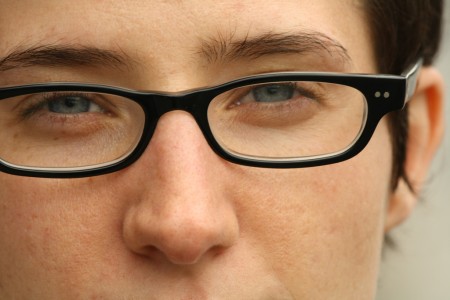
Margaret Atwood’s The Year of the Flood is a parallel story to her prior novel, Oryx and Crake. Set in two time periods with two narrators, it fills in a bit more of the dystopian world she created: one where the bulk of the horrors presented emerge primarily from the exploitation of genetic engineering and a return to gangsterism and anarchy. Climate change is part of it all, but definitely doesn’t have a prominent role among the causes of human downfall. While the book does expand the reader’s view into that world in interesting ways, it is ultimately less satisfying as a piece of speculative fiction. Nonetheless, it is well worth reading, for those interested in imagining the ways in which humanity might continue to develop.
In some ways, this is a female retelling of the previous story. The two narrators are both women, separated by a generation, and most of the key happenings centre around their treatment as women and engagement with other woman. This world certainly isn’t a pretty one, in that regard, with almost all men as enemies and a terrible lack of personal security for almost anyone. This is a book that will have parents enrolling their daughters in karate lessons and, perhaps, rightly so. Being able to defend yourself is clearly important, when the future is uncertain. At the outset, the two narrators can be somewhat hard to distinguish, but as the book progresses at least one of them develops a distinct and interesting perspective and approach.
The Year of the Flood incorporates many of Atwood’s favourite issues and motifs of late, including sex, debt, religion, corruption, and the nature and corporate manipulation of human desires. Along with being interweaved with Oryx and Crake, this book is connected with Atwood’s recent non-fiction writing on debt. It certainly explores the question of ecological debts and the responsibility of human beings towards nature. In Atwood’s world, humanity has filled the world with splices and custom creatures, while allowing almost all of the planet’s charismatic megafauna – from gorillas to tigers – to become extinct. The God’s Gardeners, the cult the novel focuses on and whose hymns it reproduces, have beautified the environmentalists of the 20th and 21st centuries, despite how their efforts have apparently failed, at least insofar as conserving nature goes. Humanity has certainly been able to endure as an industrial and consumerist society in Atwood’s world, which means they must have learned to be more effective than we are at securing resources sustainably and disposing of wastes likewise.
The novel’s plot involves rather too many improbable meetings – so many as to make Atwood’s fictional world extremely small. People run into members of their small prior groups far too easily, and sometimes make implausible jumps from place to place. In some cases, connections with characters from the previous novel feel trivial and unnecessary. A few of the motivations of the characters are unconvincing. All in all, this book rests against the structure of Oryx and Crake, sometimes adding to it in interesting ways, sometimes stressing the integrity of the amalgamation. The strongest portion of this novel is definitely what it reveals about the dynamics of small community groupings in times of danger. When it comes to broader questions about society and technology, it tends to treat those as already covered or not of enormous interest.
The plausible nature of Atwood’s dystopia remains disturbing. Indeed, it is difficult to imagine some of the elements of these stories not coming to pass within the next few decades. In particular, it seems all but certain that we will use new genetic technologies to go even farther towards exploiting animals, building on the already impressive record modern factory farms have on that front. One prediction I have doubts about – but which is common in science fiction – is the decline of the power and influence of states. Sure, corporations have become powerful; nevertheless, governments push them around easily and frequently when they have a strong reason for doing so. To a considerable extent, corporate power is reflective of the fact that many states find it agreeable to delegate at this time.
Even so, Atwood’s depiction of relative security inside corporate bubbles and relative insecurity outside is one with considerable contemporary relevance, when it comes to the kind of societies and situations in which people find themselves today. The contrast is revealing both in terms of the impact on the lives of those on either side of the divide and in terms of suggesting what kind of political, economic, and military structures exist to maintain the distinctions between outsiders and insiders, safe lives and unsafe ones.
The novel is also disturbing in terms of the acquiescence of aware consumers towards the monstrous things the corporations populating this universe are doing. If people today are mostly happy not to think twice about what is in a Chicken McNugget, would they really go along with the blatant recycling of corpses into food in the future? The degree to which Atwood’s world doesn’t grate too much against our aesthetic expectations is suggestive, in this regard. We now expect corporations to largely get away with whatever they think people will tolerate, and we expect little from one another when it comes to outrage.
All told, the book is an interesting expansion upon Atwood’s previous novel, but it does not match the original in terms of the importance of the message or the crafting of the story. In that sense, it is akin to Orson Scott Card’s Ender’s Shadow: set around the events of his magnificent Ender’s Game, and told from a new perspective. While it provided some pleasing new details for fans of the series, it was an engaging but secondary contribution.





